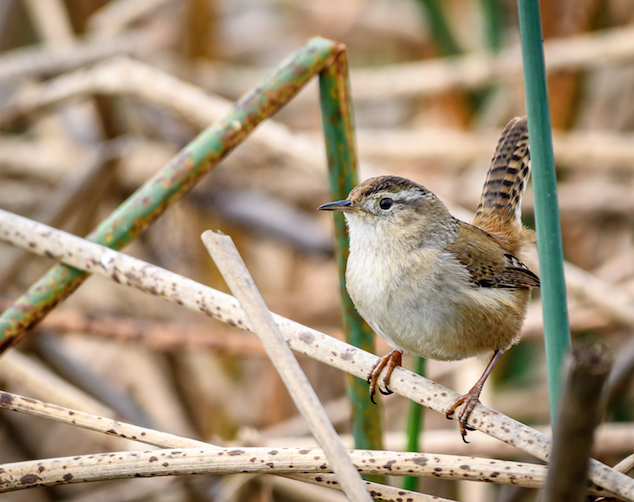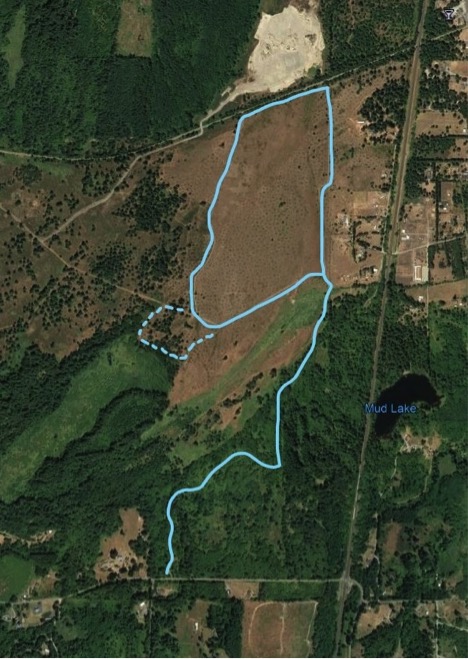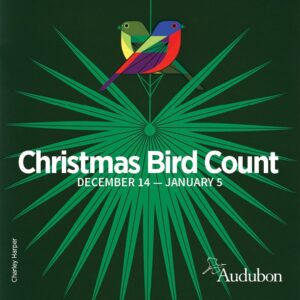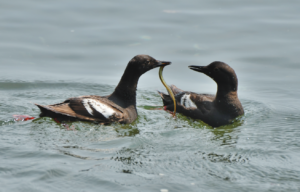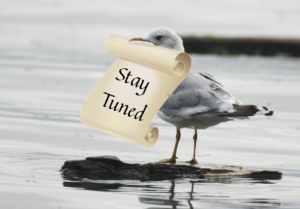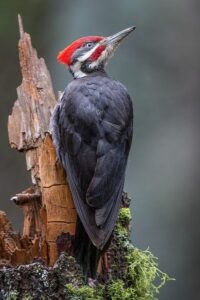Gary Wiles – March 31, 2021
Map: West Rocky Prairie; eBird: West Rocky Prairie; Scatter Creek
West Rocky Prairie is a state wildlife area managed by the Washington Department of Fish and Wildlife (WDFW) and is one of three areas open to the public in southern Thurston County that protect significant remnants of native prairie. Thanks to the efforts of many partners, the wildlife area was established in 2006. It is 809 acres in size, with 300 acres of mounded prairie as well as sizeable amounts of mixed conifer-deciduous forest, wetland, and Oregon white oak. The property supports several imperiled or sensitive species, such as the Mazama pocket gopher, Oregon spotted frog, Olympic mudminnow, Sonora skipper, and water howellia. Management to restore the prairie and wetlands and eliminate invasive plants is ongoing using prescribed fire, mowing, sowing of native plants, and other measures.
Because of the diversity of habitats, West Rocky Prairie is one of the county’s better birding destinations and makes a worthy alternative to the better known and more popular prairies at Mima Mounds and Scatter Creek. Birding at West Rocky Prairie is best from spring through fall, but especially so in May and June, when migrants have arrived and birds are most vocal. eBird lists at least 129 species for the wildlife area.
Birders should come prepared for plenty of walking and can easily spend 3-4 hours or more during visits. From the parking lot off 143rd Ave SE, visitors pass through a gate, then must walk north for 1.0 mile along a two-track road through mixed conifer-deciduous forest and a lovely grove of alder near the end before reaching the prairie (see map, solid blue line). Take your time along this section of the route because of the many opportunities for finding forest and scrub birds along the way. Upon emerging from the forest, birders will immediately encounter a wetland on the left. This should be scanned for swallows, Common Yellowthroats, Yellow Warblers, Marsh Wrens, and other species like hummingbirds perched in the scattered shrubs and small trees. Continuing a short distance, visitors will find that WDFW has recently excavated a creek crossing through the road that blocks further travel. However, a small, rickety, wooden crossing structure (perhaps hand-made by a visitor?) over the creek was present off to the left in late March 2021 and allowed access to the main prairie.
At the beginning of the prairie, the road splits and forms a large rectangular 2-mile loop that roughly follows the boundaries of the prairie and provides plenty of access for birding. Savanna Sparrows are abundant, but birders should be alert for other open-country species such as Western Bluebirds, Northern Harriers, American Kestrels, and rarely Western Meadowlarks, Vesper Sparrows, and others. When walking the east edge of the prairie, be sure not to enter the adjoining private properties. However, scanning the homes and yards can produce species that typically don’t frequent the wildlife area, such as Eurasian Collared Doves, Brewer’s Blackbirds, House Finches, and House Sparrows. While on the prairie, birders should watch for flyovers of raptors, ravens, herons, and other birds.
A highly recommended diversion from the southwest corner of the prairie loop road is to leave the road and walk several hundred yards west to two groves of oak, a willow-dominated wetland, and an area of scattered Douglas-fir (see map, dashed line). A number of species exist here that may be missed elsewhere on the trip. These include Chipping Sparrows in the Douglas-firs; House Wrens, Western Wood-Pewees, and Pacific-slope Flycatchers in the oaks; and Yellow Warblers in the willows. Recent management work in the wetland has created several small water openings that should be scanned for ducks and Pied-billed Grebes. Beyond the south end of this patchwork of habitats, a large Red-tailed Hawk nest has existed for many years in a tall cottonwood and often has adults or nestlings at it. After birding this area, return to the road and continue on to the start of the prairie loop, then hike the forest road back to the parking lot.
Directions and parking: West Rocky Prairie can be reached via several routes. From Olympia and Tumwater, travel south on I-5, get off at Exit 95 and drive 2.6 miles east on Hwy 121 (Maytown Rd SW) through the tiny settlement of Maytown until reaching Tilley Rd S. Turn right at the intersection and continue 1.4 miles south on Tilley Rd S to 143rd Ave SE, then turn left and drive east another 1.8 miles, watching for Knowles Rd SE on the right. Continue past Knowles Rd SE a very short distance (75 yds) and watch for a small side entrance marked with two small green WDFW signs on posts on the left, which leads immediately into the parking lot for West Rocky Prairie. Finding this entrance may require one or two tries, so watch carefully. A small WDFW kiosk and agency sign in the parking lot confirm that you’ve reached the right spot. The parking lot is small and can only accommodate about five cars. Once COVID-19 restrictions loosen, visitors should consider carpooling to the site to alleviate worries over sufficient parking.
West Rocky Prairie can also be accessed by taking Tilley Rd S south from the Olympia Airport. If coming north from Tenino, follow McDuff Rd SE about 1.5 miles out of town, which then turns into 143rd Ave SE at a left-hand curve with a railroad crossing, then continue another 0.5 miles on 143rd Rd SE to reach the West Rocky Prairie parking lot entrance.
Other information: A Discover Pass is required for parking. There are no restrooms onsite. Visitors are not required to stay on trails and are free to walk throughout the wildlife area. Don’t forget to watch for native prairie plants while visiting. This walk is not wheel-chair accessible.
BEFORE YOU GO:
Before heading off for a birding adventure, here are some things to consider –
1. It’s always best to have a partner with you – both to maximize the joy and to minimize the risks. BHAS cannot ensure that these locations are totally safe.
2. Don’t forget to bring your mask and hand sanitizer. Have your mask handy and put it on when passing another person not in your party.
3. Leave valuables at home.
4. Check the weather and the bird reports before heading out. An easy way to check what birds have been seen is through Birder’s Dashboard http://birdingwashington.info/dashboard/. It is a simple way to research a species, place, or checklist.


